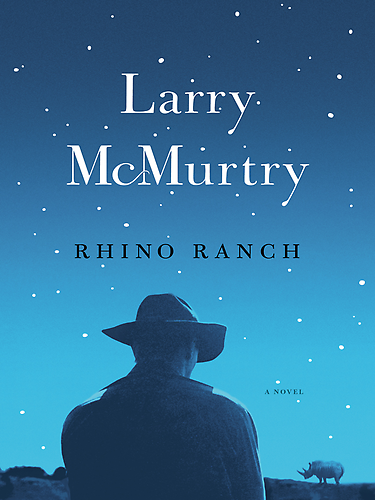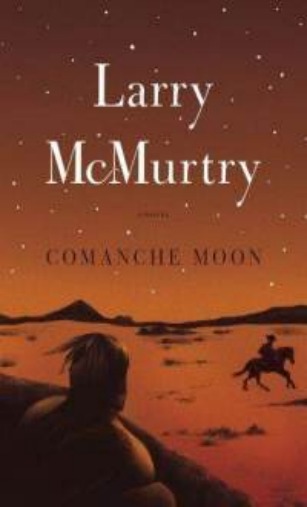Setting: The American West. Two young men begin a lifelong friendship. One of them is passionate and sensitive, the other is both more practical, more physical (although both are very physically competent), and has difficulties expressing, and sometimes even admitting to himself, his inner feelings.
There are women in this story. They love these men, but sense that the men have a deeper bond which their female lovers can never be a part of; the women feel excluded, and resentful of their male rivals.
The passionate friend dies, decades into their friendship, and the more stoic friend is left to face life alone. This forces him to face his inner self, and find the humanity he has held in but which his friend was always in touch with.
What is the story?

If you said The Last Picture Show, written in 1966 and adapted as a film in 1971, you are correct. The lives of Sonny Crawford and Duane Jackson, and Duane’s life (and emotional odyssey) after Sonny’s death, are examined in five novels, which I like to call the Thalia Cycle:
The Last Picture Show 1966
Texasville 1987
Duane’s Depressed 1999
When the Light Goes 2007
Rhino Ranch 2009






AND… if you said the story in question is the Lonesome Dove cycle, begun with the Pulitzer-winning novel in 1985, you are also correct. The friendship between Augustus MacRae and Woodrow Call spans four novels, listed here in chronological order:
Dead Man’s Walk 1995
Comanche Moon 1997
Lonesome Dove 1985
Streets of Laredo 1993




AND if you said the Oscar-winning 2005 screenplay (with writing partner Diana Ossana) for Brokeback Mountain, based on a 1997 short story by Annie Proulx, you are also correct.
The film version faithfully presented Proulx’s story about the relationship between Jack Twist and Ennis Del Mar; McMurtry’s significant addition was the expansion of the women’s roles. The mens’ marriages had not been described in detail in the Proulx story.

Considering the parallels between Proulx’s story and the themes in the aforementioned McMurtry novels, it is not surprising that he wanted to tackle the screenplay. In fact, the three stories not only echo similar plots and characters, they have a certain progression to them. The Thalia books are about two friends who grow steadily apart; Sonny becomes a supporting character in the second novel, Texasville, and dies by the end of it. The Lonesome Dove cycle’s protagonists remain “together” until Gus dies in the third novel (Lonesome Dove, actually the first of the novels to be written and published.) Brokeback Mountain’s protagonists are “together” in a much more intimate way, and are in love.





I haven’t read any of McMurtry’s memoirs and don’t know a lot of details about his biography. I do know that the fictional city of Thalia (and the Dairy Queen that becomes a sort of town epicenter) are based on McMurtry’s hometown of Archer City, and that The Last Picture Show is semi-autobiographic in the sense it is about coming of age in small-town Texas in the early 1950s. I’m not sure how specific the books’ themes are in relation to McMurtry’s actual lived experience, in other words, and it really doesn’t matter. What does matter, I think, is the depths to which he plumbs those themes throughout his work. There’s another theme that is missing from Brokeback Mountain (by necessity, both for loyalty to Proulx’s work and for the integrity of the plot): I speak, of course, of the part where “Passionate Friend” is seduced by an older woman. For Sonny Crawford it was Ruth Popper, the coach’s wife, and for Gus it was Inez Scull, the captain’s wife (I seem to remember something similar in 1995’s Pretty Boy Floyd, as well.)


This repetition of themes is not a bad thing, by any means. Nor is it unique; similar threads run through the works of Hemingway, Faulkner, Steinbeck, Tennessee Williams, and many others. I did think it was worth pointing out, though –I bet most of you have read all these books or seen their film versions and never picked up on the fact that they were basically iterations of the same story. Read/watch them again, and see if you find any other recurrent motifs.



SHAMELESS PLUG: I have motifs too! I explore many of the same racial themes in these two novels… and they share a character in common. They’ve also both garnered praise from writers I deeply respect. Check ‘em out!
http://www.amazon.com/Bound-Promise-Land-Troy-D-Smith/dp/1461042690
http://www.amazon.com/Cross-Road-Blues-Troy-Smith/dp/1935797093/ref=sr_1_1?ie=UTF8&qid=1320431970&sr=8-1



Excellent post. You're absolutely right, and I'm a bit shamed that I never picked up on that!
ReplyDeleteHey Troy,
ReplyDeleteI enjoyed this post. There's a good reason why I didn't pick up on the iterations of the theme...I may be the only person who does not like Larry McMurtry's books/stories. So I have not read any of them but Lonesome Dove. I never could like Call--everyone knew Newt was his son, and he did, too, but would never acknowledge it. That was a flaw that he could never overcome, in my eyes, no matter what else he did. I realize that's not a popular stance, but still, if we all liked the same book there'd only be one writer and one book in the world. LOL I enjoyed reading your analysis, though, and it makes sense. Very thoughtful. And I will tell you that I enjoyed Bound For the Promise-Land more than Lonesome Dove. Much more.
Cheryl
Whoa! Never thought I'd hear words like that! Though I think Call redeemed himself at the end of Streets of Laredo- it took losing two limbs and the love of a little blind girl, but he found his humanity. So far as BOUND, it helps that my hero was a genuinely good and inspirational person. Many thanks for the kind words!
ReplyDeleteNicely argued and presented. As someone who's defended BBM as a western against 90% of popular opinion, I recall seeing the parallel to LD early on. Then again, the theme of male-bonding is not uncommon in western fiction and films.
ReplyDeleteMcMurtry talks about his family and growing up near Wichita Falls, Texas, in an essay called "Take My Saddle From the Wall" which can be found in his "In a Narrow Grave." It's also collected in Viking's Portable Western Reader, edited by William Kittredge.
Also Buffalo Gals, his book about Buffalo Bill's Wild West Show and the women involved, Calamity Jane for instance had lesbian undertones as well
ReplyDeleteI really enjoyed Buffalo Gals. And you're right- Jane and Dora actually WERE female versions of the theme I just discussed.
ReplyDeleteGreat, thoughtful analysis. It's clear you are in academia!
ReplyDeleteHistorians look for connections ;-)
ReplyDeleteI've only seen the mini-series of LONESOME DOVE (I tried to make it through the book but it's just too long for me) and haven't read or seen BROKEBACK MOUNTAIN, but I can see the parallels anyway. And I'm a big fan of THE LAST PICTURE SHOW, both the novel and the film, to the point that I've been to the pool hall that's in the movie and talked to the old man who owned it in the Seventies when the filming was done there in Archer City. I like all of McMurtry's early work but haven't been able to work up much enthusiasm for his efforts in recent years. Probably more my fault than his.
ReplyDeletemotifs...I've been wondering what to call them in Western fiction. Heretofore I just said they are formula books. In the past two weeks I went on a Western fiction reading spree, reading eight book by three different authors, two of whom are considerd "big boys" by WWA and book reviewers. By the third book it seemed like "Groundhog Day" but I plodded on. There were just too many similarities among the books, not just in form but in substance. It was almost like seeing the castles in Europe, "If you've seen one, you've seen them all," or in this case, if you've read one, you've read them all. Discussion, anyone?
ReplyDeleteI think there are two sides to argue on that point, Peggy. On the one hand, folks who turn to Westerns (and other genres) as escapism tend to like the formula aspect, because it comforts them- kind of like ritual. It takes a consummate craftsman to work within those confines and still come up with a compelling story, and I know several guys and gals writing today who do just that. On the other hand, the stories that really stick with us are often the ones that push the boundaries; I like reading those too, myself. I like Louis L'Amour, but some of his books are, as you said, virtually interchangeable. Thing is, that kind of boundary-pushing Western is a hard sell- publishers don't know how to categorize them, and sometimes readers don't know what to make of them (and rebel when they don't get what they expected.)
ReplyDeleteSo there are pros either way- I suppose it all comes down to which you prefer. And some folks like a little of both.
I will say that one of my novels, Caleb's Price, was a deliberate attempt to take as many "standard" Western cliches as possible and weave them into a story that would be the opposite of what a reader would expect just from reading the (very familiar) plot. I was happy with how it turned out, and I think I can safely say it's the same as every formula western you've ever read and wildly different at the same time. End-of-plug.